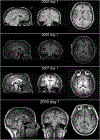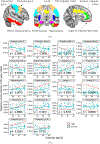BrainAGE and regional volumetric analysis of a Buddhist monk: a longitudinal MRI case study
- PMID: 32100616
- PMCID: PMC7150651
- DOI: 10.1080/13554794.2020.1731553
BrainAGE and regional volumetric analysis of a Buddhist monk: a longitudinal MRI case study
Abstract
Yongey Mingyur Rinpoche (YMR) is a Tibetan Buddhist monk, and renowned meditation practitioner and teacher who has spent an extraordinary number of hours of his life meditating. The brain-aging profile of this expert meditator in comparison to a control population was examined using a machine learning framework, which estimates "brain-age" from brain imaging. YMR's brain-aging rate appeared slower than that of controls suggesting early maturation and delayed aging. At 41 years, his brain resembled that of a 33-year-old. Specific regional changes did not differentiate YMR from controls, suggesting that the brain-aging differences may arise from coordinated changes spread throughout the gray matter.
Keywords: Buddhist monk; MRI case study; long-term meditator; machine learning.
Figures











References
-
- Ashburner J, & Friston KJ (2000). Voxel-based morphometrythe methods. Neuroimage, 11 (6), 805–821. - PubMed
Publication types
MeSH terms
Grants and funding
LinkOut - more resources
Full Text Sources
Medical
